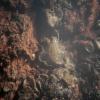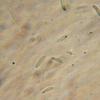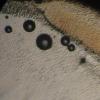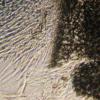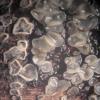
15-12-2025 15:48
 Danny Newman
Danny Newman
Melanospora cf. lagenaria on old, rotting, fallen

15-12-2025 15:54
 Johan Boonefaes
Johan Boonefaes
Unknown anamorph found on the ground in coastal sa

15-12-2025 21:11
 Hardware Tony
Hardware Tony
Small clavate hairs, negative croziers and IKI bb

15-12-2025 07:09
 Danny Newman
Danny Newman
indet. Rutstroemiaceae sp. on unk. fallen leavesMc

15-12-2025 07:05
 Danny Newman
Danny Newman
Pseudosclerococcum golindoi (det: Zotto)near Cosb

15-12-2025 11:49
 Danny Newman
Danny Newman
ITS sequences from the following two collections B

15-12-2025 12:34
 Danny Newman
Danny Newman
indet. Rhytismataceae on oak leafnear Purchase Roa

09-12-2025 12:06
 Andgelo Mombert
Andgelo Mombert
Bonjour,Je recherche l'article concernant Hypobryo
Mollisia
Yatsiuk Iryna,
12-01-2011 11:36
 Hello, Forum!
Hello, Forum!Here is one of Mollisias. it is really difficult genus for me:( I tried to identify it with A. Gminder's key and got M. pyrenopezizoides, but of course I'm not sure about it.
It was collected on decorticated wood, probably Ulmus or Alnus.
Please, if someone has ideas about it, share with me...
Irina
Yatsiuk Iryna,
12-01-2011 11:41
Yatsiuk Iryna,
12-01-2011 11:47
Andreas Gminder,
12-01-2011 12:15

Re:Mollisia
Hello Irina,
the foto looks as if it is KOH negative, so M. "pyrenopezizoides" is the wrong part of the key.
To me it seems like simply M. cinerea (small spores, KOH-, no oil).
best regards,
Andreas
the foto looks as if it is KOH negative, so M. "pyrenopezizoides" is the wrong part of the key.
To me it seems like simply M. cinerea (small spores, KOH-, no oil).
best regards,
Andreas
Yatsiuk Iryna,
12-01-2011 13:47

Re:Mollisia
Thank you, Andreas!
The KOH-reaction is really a problem, cause I still have never seen strong positive reaction working with Mollisias!
Irina
The KOH-reaction is really a problem, cause I still have never seen strong positive reaction working with Mollisias!
Irina
Andreas Gminder,
12-01-2011 13:53

Re:Mollisia
Hi Irina,
yes, I admit that it sometimes can be a problem. Especially when you have dried spimens or old and overaged collections (such as yours shown here ...). Sometimes there is a tendency to become yellowish when overaged, what might be interpreted as a positiv KOH reaction.
Best is, you collect Mollisia rosae (on Rosa spp.) or Mollisia fusca (e.g. on wet Alnus twigs), which both have a strong positive reaction. Then you can see how a positive reaction looks like.
best regards,
Andreas
yes, I admit that it sometimes can be a problem. Especially when you have dried spimens or old and overaged collections (such as yours shown here ...). Sometimes there is a tendency to become yellowish when overaged, what might be interpreted as a positiv KOH reaction.
Best is, you collect Mollisia rosae (on Rosa spp.) or Mollisia fusca (e.g. on wet Alnus twigs), which both have a strong positive reaction. Then you can see how a positive reaction looks like.
best regards,
Andreas
Yatsiuk Iryna,
12-01-2011 15:37

Re:Mollisia
Thank you, Andreas,
I'll try to collect Mollisias from this substrata.
Irina
I'll try to collect Mollisias from this substrata.
Irina
Yatsiuk Iryna,
12-01-2011 17:42

Re:Mollisia
Andreas,
If you don't mind, I have some more questions. How I can distinguish Mollisia cinerea from M. cinerella, M. cinereoolivascens, M. olivaceocinerea? All these species have small spores and it is not clear about oil drops.
And one more - is that normal habitus for Mollisia cinerea (photo)?
If you don't mind, I have some more questions. How I can distinguish Mollisia cinerea from M. cinerella, M. cinereoolivascens, M. olivaceocinerea? All these species have small spores and it is not clear about oil drops.
And one more - is that normal habitus for Mollisia cinerea (photo)?
Andreas Gminder,
13-01-2011 07:26

Re:Mollisia
Dear Irina,
good question! I would like to know the answer. The cinerea-group (if they form a group ....) is a problem for me still. I think I can recognize what I call olivaceocinerea quite well. It has an excipulum which becomes greenish when KOH is added instead of greyish as in the other species. Moreover the spores are not completely empty and they are a little bit longer. You can see a documentation on this site: http://mollisia.de/Arten/olivaceocinerea.html which is not linked yet on my homepage. There is another species in this group, which will be described in next time, from France, which has spores which are septate already in mature spores in the ascus. I will call it M. atlantica, because it is quite common at the atlantic cost but I have never met it here in continental Germany.
The habit on your foto may well be M. cinerea. The apothecia on the left side are already detoriating or beginning to have a mould on them.
best regards,
Andreas
P.S.: Are you from Ucraine and have sent me some specimens last year?
good question! I would like to know the answer. The cinerea-group (if they form a group ....) is a problem for me still. I think I can recognize what I call olivaceocinerea quite well. It has an excipulum which becomes greenish when KOH is added instead of greyish as in the other species. Moreover the spores are not completely empty and they are a little bit longer. You can see a documentation on this site: http://mollisia.de/Arten/olivaceocinerea.html which is not linked yet on my homepage. There is another species in this group, which will be described in next time, from France, which has spores which are septate already in mature spores in the ascus. I will call it M. atlantica, because it is quite common at the atlantic cost but I have never met it here in continental Germany.
The habit on your foto may well be M. cinerea. The apothecia on the left side are already detoriating or beginning to have a mould on them.
best regards,
Andreas
P.S.: Are you from Ucraine and have sent me some specimens last year?
Yatsiuk Iryna,
14-01-2011 11:55

Re:Mollisia
Andreas,
Thank you for information! I saw this olivaceous tint of excipular hyphae some times, but probably not so strong.
Yes, it's me:)
Irina
Thank you for information! I saw this olivaceous tint of excipular hyphae some times, but probably not so strong.
Yes, it's me:)
Irina
Baeza Yajaira,
01-12-2011 17:19

Re : Mollisia
Hello im a biology student and now im trying to identify some Mollisias and i just have Denni's key and Seave's key but ithey both are not so successful i dont if someelse can help with this sending me a kye that can help please
Yannick Mourgues,
01-12-2011 23:04
